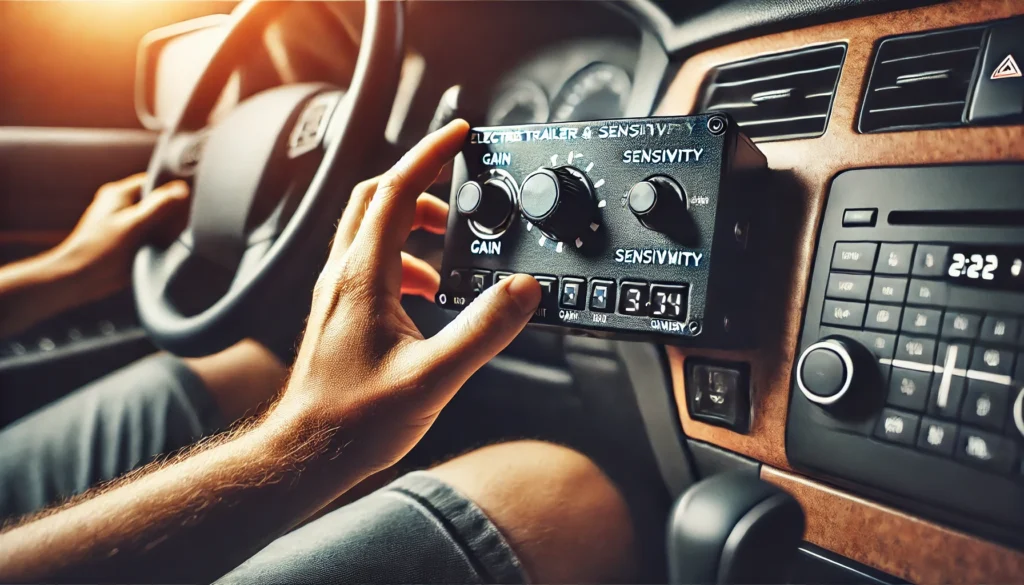Adjusting your electric trailer brakes controller is essential to ensuring that your trailer brakes function properly, providing safe and reliable stops while towing. The brake controller is the brain of your trailer’s braking system, and when adjusted correctly, it helps to balance the braking force between your towing vehicle and the trailer. In this guide, we will explain how to adjust an electric trailer brakes controller, the importance of doing so, and how it impacts your towing experience.
Why Adjust Your Electric Trailer Brakes Controller?
Properly adjusting your trailer brake controller allows the trailer brakes to engage smoothly and proportionally with your vehicle’s brakes. An improperly adjusted controller can cause issues like:
- Over-Braking or Under-Braking: This can lead to the trailer jerking, swaying, or even skidding.
- Increased Stopping Distance: Insufficient braking power can result in longer stopping distances, which may cause accidents.
- Brake Wear: If the controller is not set correctly, it can either overwork your vehicle’s brakes or put unnecessary strain on the trailer brakes, leading to premature wear.
How Do Electric Trailer Brake Controllers Work?
The electric trailer brake controller is a device installed in your towing vehicle that sends an electrical signal to the trailer’s brake system when you press the brake pedal. The intensity of the signal depends on the amount of pressure you apply to the brake pedal and the settings of the controller. There are two main types of brake controllers:
- Time-Delayed Controllers: These send a preset amount of braking force to the trailer after a set time delay when the brakes are applied.
- Proportional Controllers: These detect how hard the vehicle is braking and apply a proportional amount of braking force to the trailer.

Step-by-Step Guide to Adjusting Electric Trailer Brakes Controller
Follow these steps to properly adjust your electric trailer brakes controller for optimal performance:
1. Locate the Brake Controller
Most brake controllers are mounted under the dashboard of the towing vehicle, near the driver’s seat. If you’re not sure where yours is located, consult your vehicle’s manual or the installation instructions for the brake controller.
2. Familiarize Yourself with the Settings
Brake controllers typically have two main settings that can be adjusted:
- Gain Control: This controls how much braking power is sent to the trailer. The gain should be set according to the trailer’s weight and the type of terrain you’ll be driving on.
- Sensitivity Adjustment: This setting determines how quickly the trailer brakes respond when the brake pedal is pressed.
3. Start by Setting the Gain
Begin by setting the gain to the manufacturer’s recommended level based on the weight of your trailer. For most brake controllers, this will be a numbered dial or digital setting. A heavier trailer will require a higher gain setting, while a lighter trailer will need a lower gain.
4. Perform a Brake Test
Find a safe and level area, such as an empty parking lot, to test the brake controller settings. Start by driving at a low speed (around 20 mph) and apply the brakes. Adjust the gain setting until you feel that the trailer brakes are applying enough force to slow the trailer without locking up or skidding.
5. Fine-Tune the Sensitivity
Once the gain is set, adjust the sensitivity of the brake controller. This setting controls how aggressively the trailer brakes engage when you press the brake pedal. If the brakes feel too harsh or jerky, reduce the sensitivity. If the trailer feels like it’s pushing the towing vehicle, increase the sensitivity.
6. Test on Different Terrains
After you’ve adjusted the gain and sensitivity settings, take the trailer for a test drive on different terrains, such as hills or rough roads. Make any additional adjustments based on how the trailer brakes perform in various conditions. You may need to adjust the gain higher when driving downhill or towing heavy loads.
7. Make Regular Adjustments
It’s important to remember that the weight of your trailer may change based on the load you’re towing, and this will affect your brake settings. Before every trip, especially when towing varying loads, check and adjust the brake controller settings to ensure optimal performance.
Common Issues with Electric Trailer Brake Controllers
If you’re experiencing issues with your brake controller, it could be due to improper settings, wiring problems, or mechanical issues with the trailer brakes themselves. Here are a few common problems and how to troubleshoot them:
- Brakes Locking Up: This is usually caused by the gain setting being too high. Lower the gain and test again.
- Trailer Brakes Not Engaging: Check the wiring connections between the towing vehicle and trailer to ensure they are secure. Also, make sure the brake controller is receiving power.
- Jerky Braking: Adjust the sensitivity setting to create a smoother braking experience.
Maintenance Tips for Electric Trailer Brake Controllers
To keep your electric trailer brake controller functioning properly, follow these maintenance tips:
- Inspect Wiring: Regularly check the wiring connections for any signs of corrosion, damage, or wear. Faulty wiring can disrupt the controller’s ability to send signals to the trailer brakes.
- Clean the Controller: Keep the brake controller free of dust and debris. If it’s exposed to moisture, dry it promptly to prevent any electrical malfunctions.
- Test Before Every Trip: Perform a quick brake test before every towing trip to ensure that the controller settings are correct and the trailer brakes are functioning as expected.
Conclusion
Adjusting your electric trailer brakes controller is essential for safe and efficient towing. With the proper settings, your trailer brakes will work in harmony with your vehicle, providing smooth and controlled stops under various driving conditions. Regularly adjust your brake controller and maintain your trailer brakes to ensure you’re always ready for the road ahead.
